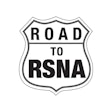Thursday, December 4 | 1:30 p.m.-1:40 p.m. | R6-SSBR11-1 | Room S406A
Attendees for the final day of RSNA can see how breast density metrics for digital breast tomosynthesis (DBT) and whole-breast ultrasound vary with age.
In this session, Liane Philpotts, MD, from Yale Medicine in New Haven, CT, will discuss her team’s research. The team found that combined DBT and whole-breast ultrasound in younger women with dense breasts has a similar abnormal interpretation to DBT only, but it has a higher positive predictive value (PPV) for finding supplemental cancers.
The study included over 93,000 DBT screenings, with about 60,000 of these being performed on women aged 65 and younger. About 39% of the 65-and-younger group had dense breasts, and 62% underwent same-day DBT plus whole-breast ultrasound.
Of the 33,037 screenings in women 65 and older, 26% were dense, and 69% underwent same-day DBT plus ultrasound.
The researchers reported that the abnormal interpretation rate for women 65 and younger for DBT alone was 16.6% compared with 12.5% for the combined approach (p < 0.0001). Meanwhile, the abnormal interpretation rate for women 65 and older undergoing DBT alone was 8.1% compared with 9.1% women undergoing DBT plus ultrasound (p = 0.13).
Whole-breast ultrasound found an additional 24 cancers for a supplemental cancer detection rate of 1.1 per 1,000 exams. Half of the cancers were in women younger than 65 years old, and the other half were in women ages 65 and older. This led to a significantly higher PPV in women 65 and older (p = 0.02).
Find out more by attending this session.


